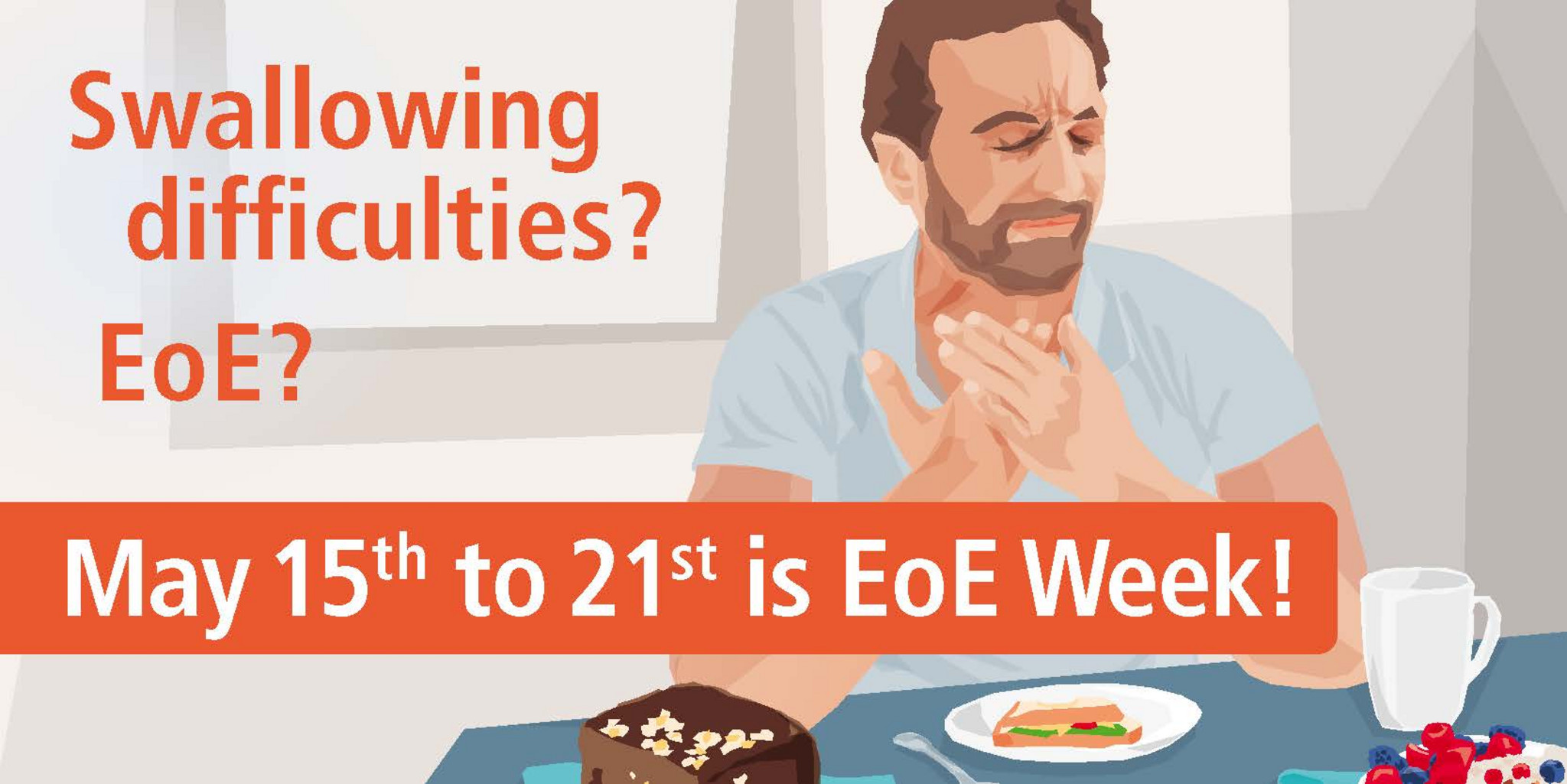Difficoltà di deglutizione? EoE?
Difficulty swallowing and pain while eating may be warning signs of a chronic inflammatory disease of the esophagus (eosinophilic esophagitis, EoE).
For over 60 years, Dr. Falk Pharma GmbH has been developing and marketing innovative medicines to treat diseases of the liver, gallbladder, gut, and the esophagus, including rare diseases such as eosinophilic esophagitis (EoE). That’s why we support this year’s EoE Week from 15th – 21st May 2023 in order to help raise awareness for EoE.

What is eosinophilic esophagitis?
Eosinophilic esophagitis is a disease of chronic inflammation (“-itis”) of the esophagus which is characterized by infiltration with a specific type of white blood cells called eosinophils, giving the condition its name “eosinophilic esophagitis”. It is still not fully understood what causes the disease or how it develops.
What are the typical symptoms of EoE?
The hallmark symptom of EoE in adults is difficulty swallowing, which can even lead to food becoming stuck in the throat. This symptom often drives patients to develop strategies to avoid this discomfort, such as eating very slowly, washing down food with lots of liquids, pureeing their foods in a blender, avoiding solid and dry foods, and rarely or never going out to eat. EoE must be taken very seriously as it is a chronic disease and progresses if left untreated, increasingly impacting the proper function of the esophagus. This can lead to a food bolus becoming lodged in the throat, which sometimes requires an emergency endoscopy to remove the stuck food.
How is EoE diagnosed?
A doctor specializing in digestive medicine (a gastroenterologist) is required to diagnose eosinophilic esophagitis. The gastroenterologist reviews the patient’s reported symptoms and performs an endoscopy, a procedure that looks into the esophagus using a flexible tube with an attached camera and which also allows tissue samples (biopsies) to be collected. Patients with EoE usually have signs of inflammation in their esophagus. However, the essential feature of the disease is an increased number of eosinophils in the biopsy of the mucosal tissue.
What treatments are available for EoE?
There are currently three different treatment options for EoE: medications (e.g. topical corticosteroids, proton pump inhibitors, or - in case conventional therapy fails - biologics), diets which eliminate certain food allergens (foods which trigger an allergic reaction), and a surgical procedure to widen the esophagus during an endoscopy. The procedure to widen the esophagus is called a dilation.
Why is EoE classified as a rare disease?
Across Europe as a whole, there are “only” an average of 34.4 cases of EoE per 100,000 individuals, which classifies it as a rare disease. However, there is a large geographical variation within this average, and moreover about 80% of EoE patients are men. Although the disease can start at any age, the majority of patients are diagnosed between the ages of 30 and 50.
Eosinophilic esophagitis is a relatively “recent” disease, having only been first reported as a unique condition in 1993. It has received growing attention by the medical field since the 2000s and is now thought to be the second-most common esophageal disease following reflux disease. Nonetheless, EoE is often overlooked in patients with esophageal symptoms or misdiagnosed as another esophageal disorder (such as reflux disease). These hurdles can lead to delays in diagnosis and treatment, increasing patients’ suffering and allowing the disease to progress.
EoE Week 15th – 21st May 2023
EoE Week to raise awareness for this rare disease is an initiative by several different patient organizations in Europe and overseas. The week (day or even month in some countries) intends to spread the word about EoE through events, videos, and challenges.
More details on EoE are available at https://drfalkpharma.com/en/indications/eosinophilic-esophagitis/


